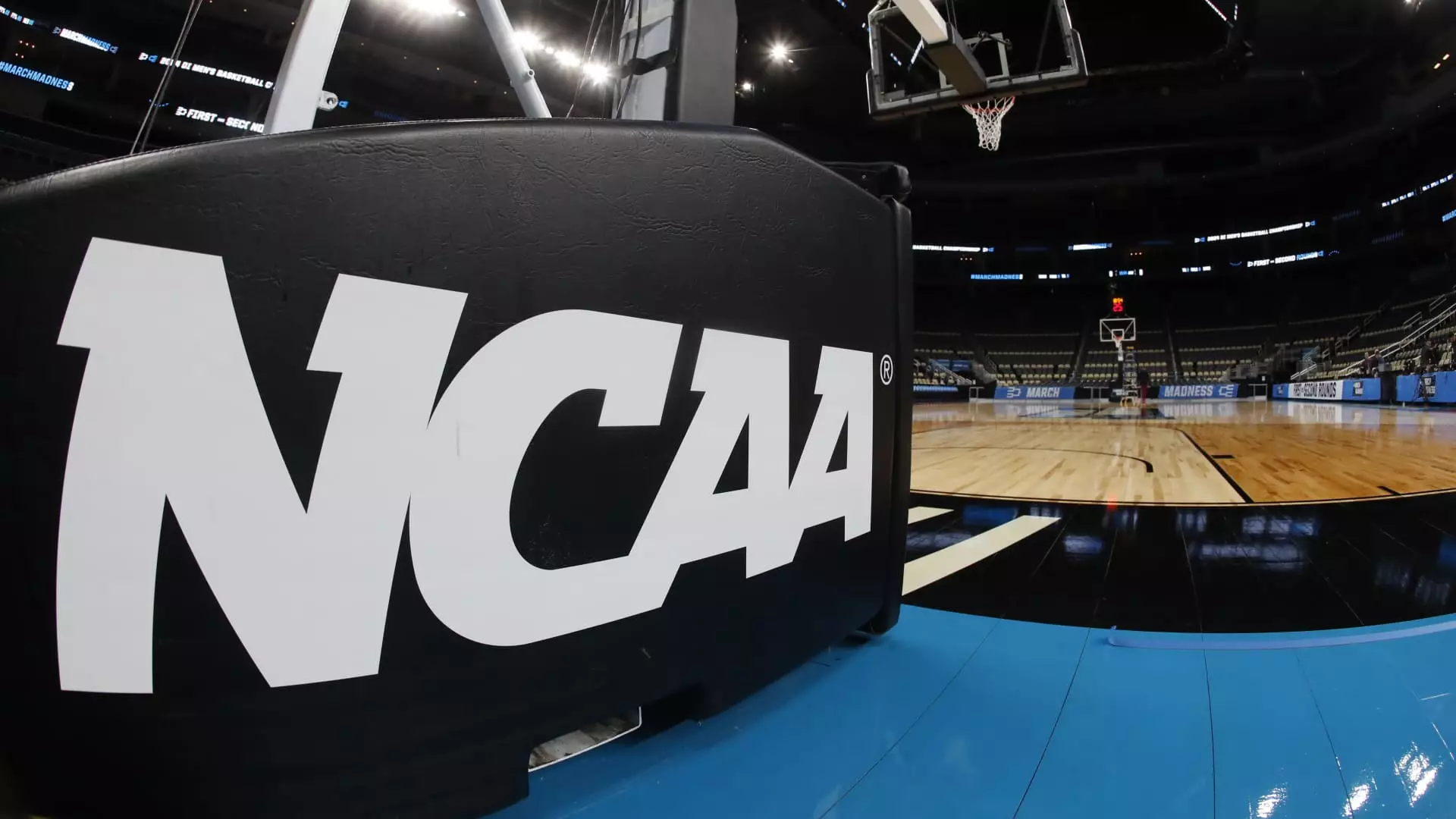On a pivotal Thursday, the National Collegiate Athletic Association (NCAA) announced a new policy regarding transgender student-athletes that has stirred significant debate. The revision came swiftly in the wake of an executive order from President Donald Trump, which threatened to cut federal funding to educational institutions that permit trans women to participate in women’s sports. This aligns with a broader trend where governmental influence on sports increasingly reflects political ideologies rather than inclusive athletic practices.
Key provisions of the updated policy delineate that individuals assigned male at birth may practice with women’s teams and access various benefits such as medical care. However, these athletes are vetted from participating in official competitions. Notably, the policy also stipulates that athletes assigned female at birth who are undergoing testosterone treatments or hormone therapy cannot compete in women’s teams. This prohibition is indicative of the NCAA moving away from its previous practice, which was aligned with international Olympic standards designed to be more accommodating.
Historically, the NCAA has deferred to the governing bodies of individual sports regarding the eligibility of transgender athletes. This practice shifted recently, as the organization opted for a policy model that emphasizes uniformity in eligibility requirements in response to various contrasting state laws and legal rulings. NCAA President Charlie Baker emphasized the importance of a consistent national standard, positing it as a protective measure for student-athletes navigating the complexities of eligibility. However, the underlying motivations appear to be heavily influenced by external political pressures rather than grounded in empirical evidence and sports science that typically governs athletic policy-making.
Baker’s claims about the low number of active trans athletes within the NCAA—fewer than ten—raise questions about whether such sweeping measures are merited. This proliferation of restrictions may ultimately alienate a minority of student-athletes rather than expand opportunities for participation. The stance taken by the NCAA has raised considerable unease and reflection among advocates for transgender rights and inclusion within athletics.
One of the significant criticisms of the new policy is its binary view of gender, which not only oversimplifies complex gender identities but also excludes nonbinary and intersex individuals. Notably, Chris Mosier, a well-known transgender triathlete and advocate for trans rights, vocalized concern that this policy enshrines a rigid notion of gender defined by assigned sex at birth. As such, it fails to acknowledge the diverse identities that exist beyond a binary framework, which could lead to undermining the very foundation of inclusion in sports.
Moreover, the implications extend beyond identity politics; they affect intersex athletes and women undergoing hormone therapy for legitimate medical conditions. This narrowing of athlete participation risks enforcing a punitive structure that prioritizes a politically charged interpretation of gender over the rights and well-being of student-athletes, further entrenching inequality in sports.
The response from advocacy organizations has been strong and immediate. GLAAD and other LGBTQ+ advocates have condemned the new policy as “deeply disturbing,” characterizing it as a regressive move emboldened by misinformed political rhetoric emanating from the Trump administration. These criticisms suggest that such policies lack grounding in scientific understanding or regard for the complexities of human rights.
The growing backlash highlights a crucial juncture in the conversation surrounding sports, identity, and governmental influence, underscoring a tension between progressive advocacy for inclusivity and reactionary policies based on narrow definitions of gender. As the NCAA aligns itself with political currents, it raises questions about whether the organization can reconcile these newly adopted standards with its mission to foster an inclusive environment for all athletes.
Moving forward, the NCAA stands at a crossroads. The current policy shift, underscored by political imperatives, poses a challenge to the ideals of inclusivity and equity that many organizations strive to achieve. For student-athletes, particularly those who identify as transgender or nonbinary, the landscape of competitive sports may become increasingly treacherous under this restructured policy framework. As dialogue continues, advocates for transgender rights will need to remain vigilant; their efforts will be essential for safeguarding athletic opportunities against the encroaching tide of political influence. Ultimately, the NCAA must grapple with the delicate balance of policy-making that accounts for scientific evidence, advocacy for diverse identities, and the fundamental ethos of sportsmanship.


Leave a Reply